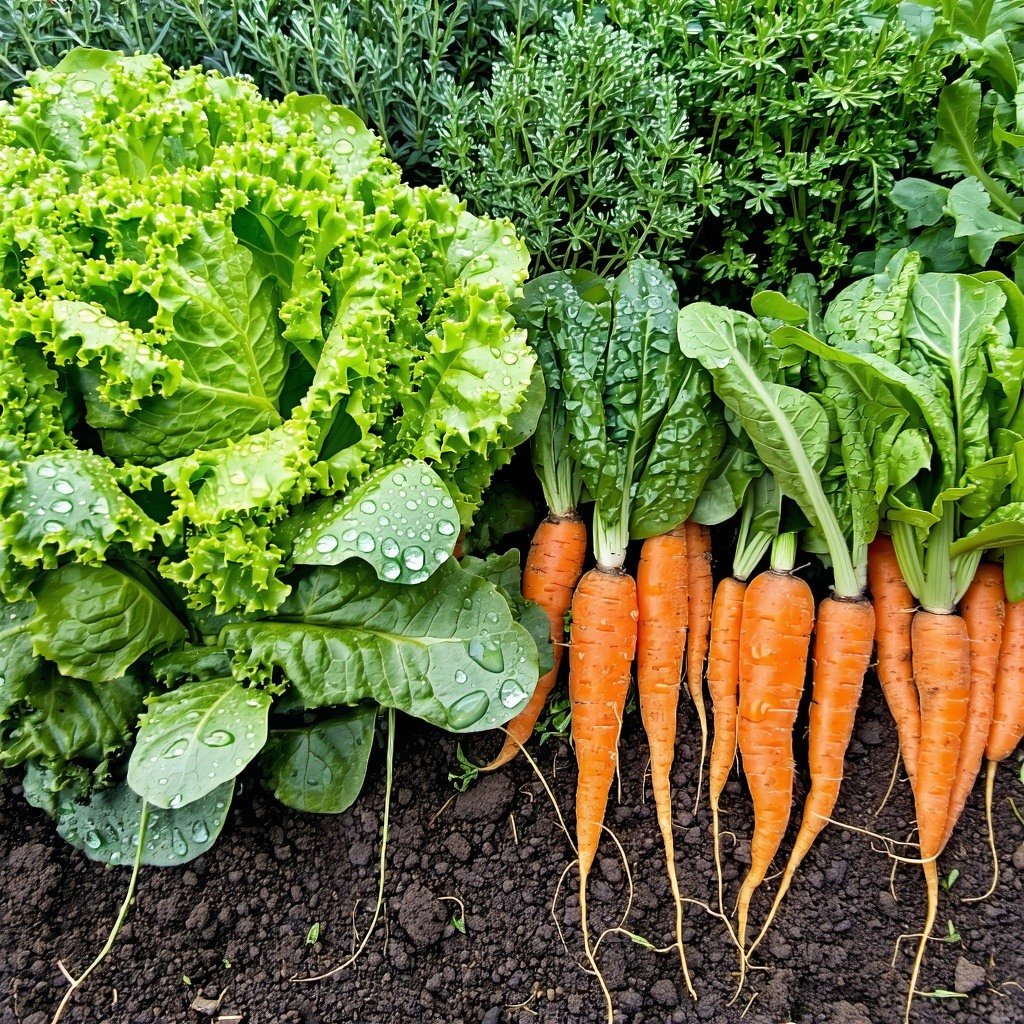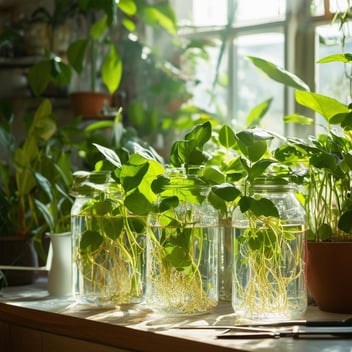Winter Wonders: Growing Hardy Veggies and Herbs from Seed in SEQ
-
Introduction
Embracing the Mild Winters of South East Queensland
South East Queensland (SEQ) is blessed with temperate winters, offering gardeners a unique opportunity to cultivate a variety of robust vegetables and herbs from seed. The mild climate allows for continuous gardening, ensuring fresh produce even during the cooler months.
Benefits of Winter Gardening
Engaging in winter gardening not only provides a continuous supply of nutritious vegetables and aromatic herbs but also enriches the soil, suppresses weeds, and maintains garden biodiversity. It offers a rewarding experience, connecting gardeners to the rhythms of nature year-round.
-
Understanding SEQ's Winter Climate
Mild Temperatures and Growing Conditions
SEQ experiences mild winters, with daytime temperatures ranging from 15°C to 25°C and cooler nights seldom dipping below 5°C. These conditions are ideal for growing a variety of cool-season crops that thrive without the intense heat of summer.
Advantages for Seed Germination
The consistent, moderate temperatures facilitate steady seed germination and seedling development. Additionally, reduced pest activity during winter months minimizes the need for intensive pest management.
-
Selecting Hardy Vegetables for Winter Sowing
Leafy Greens
-
Kale (Brassica oleracea var. sabellica)
Kale is a nutrient-dense leafy green that flourishes in cooler temperatures. Its resilience to frost enhances its sweetness, making it a winter favorite.
-
Spinach (Spinacia oleracea)
Spinach thrives in the mild winters of SEQ, producing tender leaves rich in iron and vitamins. Regular harvesting encourages continuous growth throughout the season.
Root Vegetables
-
Carrots (Daucus carota)
Carrots sown in winter develop robust flavors and crisp textures. They require well-drained soil and consistent moisture for optimal growth.
-
Beetroot (Beta vulgaris)
Beetroot is well-suited for winter cultivation, offering earthy flavors and vibrant colors. Both roots and leaves are edible, providing versatility in the kitchen.
Brassicas
-
Broccoli (Brassica oleracea var. italica)
Broccoli thrives in cooler climates, producing dense heads rich in nutrients. Timely harvesting ensures continued side-shoot production.
-
Cauliflower (Brassica oleracea var. botrytis)
Cauliflower's preference for cool weather makes it ideal for winter gardens in SEQ. Consistent care yields firm, white curds perfect for diverse culinary uses.
-
-
Choosing Hardy Herbs for Winter Cultivation
Perennial Herbs
-
Thyme (Thymus vulgaris)
Thyme is a hardy perennial that withstands cooler temperatures, offering aromatic leaves year-round. It's a versatile herb, enhancing various dishes with its subtle flavor.
-
Sage (Salvia officinalis)
Sage's robust nature makes it suitable for winter growth, providing earthy flavors to seasonal recipes. Its evergreen foliage adds aesthetic appeal to gardens.
Annual Herbs
-
Coriander (Coriandrum sativum)
Coriander prefers cooler weather, making winter an ideal time for cultivation in SEQ. Its fresh leaves and seeds are staples in various cuisines.
-
Parsley (Petroselinum crispum)
Parsley is a biennial herb often grown as an annual, flourishing in the mild winters of SEQ. It provides continuous harvests of flavorful leaves.
-
-
Preparing the Garden for Winter Sowing
Soil Preparation
Begin by clearing remnants of previous crops and weeds. Incorporate organic matter, such as compost or well-rotted manure, to enhance soil fertility and structure. Ensure the soil is well-drained to prevent waterlogging during wetter periods.
Bed Preparation
Designate garden beds with appropriate spacing to accommodate mature plant sizes. Raised beds can improve drainage and soil warmth, benefiting winter crops.
-
Sowing Techniques for Winter Crops
Direct Sowing vs. Transplanting
Hardy vegetables like carrots and beetroots are best sown directly into the soil to avoid root disturbance. Leafy greens and brassicas can be started in seed trays and transplanted once they develop sturdy root systems.
Optimal Sowing Depth and Spacing
Follow specific seed packet instructions for depth and spacing. Generally, smaller seeds require shallow planting, while larger seeds need deeper placement. Proper spacing ensures adequate airflow and reduces disease risk.
7. Managing Pests and Diseases in Winter Gardens
Common Winter Pests in SEQ
While winter generally sees a decline in pest activity, certain resilient species may still pose challenges. Aphids, for instance, can persist on leafy greens, extracting vital sap and potentially transmitting viruses. Cabbage loopers, the larvae of moths, may also be present, creating perforations in brassica leaves. Additionally, the recent detection of the varroa mite (Varroa destructor) in South East Queensland raises concerns, as this parasite can devastate bee populations, thereby affecting pollination.
Disease Prevention Strategies
To mitigate disease risks, implement crop rotation to prevent soil-borne pathogens from accumulating. Ensure proper spacing between plants to facilitate air circulation, thereby reducing the likelihood of fungal infections. Utilizing disease-resistant seed varieties can also bolster your garden's defenses against common ailments.
Organic Pest Control Methods
Encouraging natural predators, such as ladybugs and lacewings, can help control aphid populations. Introducing parasitic wasps can effectively manage caterpillar infestations. For fungal issues like powdery mildew, applying neem oil or a bicarbonate solution can serve as effective treatments.
8. Harvesting and Utilizing Winter Produce
Optimal Harvest Times
Harvest leafy greens like kale and spinach when leaves are tender and before they become overly mature, which can result in bitterness. Root vegetables such as carrots and beetroots should be harvested once they've reached their intended size, ensuring sweetness and optimal texture.
Culinary Uses and Preservation
Winter vegetables and herbs offer a plethora of culinary possibilities. Kale and spinach can be incorporated into warming soups and stews, providing both flavor and nutritional value. Root vegetables like carrots and beetroots are excellent when roasted or pickled for extended shelf life. Herbs such as thyme and sage can be dried or frozen, preserving their aromatic qualities for future use.
9. Conclusion
Embarking on winter gardening in South East Queensland not only ensures a continuous supply of fresh produce but also enriches the gardening experience by adapting to seasonal rhythms. By selecting appropriate crops, preparing the soil meticulously, and employing vigilant care practices, gardeners can transform the cooler months into a season of abundance and growth. Embrace the winter wonders that SEQ's climate graciously permits, and let your garden flourish year-round.




